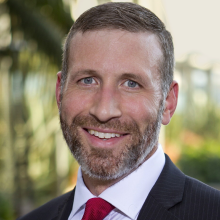Boeing’s current crisis over the 737 Max illustrates the dangers inherent in a company CEO also holding the position of chairman, as embodied by the embattled CEO Dennis Muilenburg, who proxy advisers have called on to resign as chairman of Boeing’s board of directors.
In times of crisis, an inherent but productive tension exists between finding strategies for expedient crisis resolution and maintaining focus on longer-term value preservation. In light of these two priorities, a dual CEO-chairman is nearly always ill-positioned to manage a large company in crisis. The conjoined roles set the leader up for failure and have the potential to contribute to significant losses in shareholder value.
Consider the responsibilities in question. A CEO must direct incredible amounts of daily energy to solving a host of immediate, critical problems, ranging from operational issues to massive public relations disasters. A chairman is tasked with long-term protection of shareholder interests and must therefore ensure solutions being implemented are more than just Band-Aids. Managing both sets of responsibilities and perspectives at the same time is close to impossible for even the most gifted corporate leader.
For reasons like this, more and more corporations are moving away from this dual-management structure. The percentage of S&P 500 companies with a chief executive who also serves as chairman is currently at its lowest in at least a decade, according to ISS Analytics, which reports this figure as 45.6 percent in 2018, down from 48.7 percent the year before.
Conflicts of interest aside, there is evidence that dual CEO-chairman positions are needlessly expensive. Research conducted in 2012 by GMI Ratings shows that combining the CEO and chairman roles costs corporations approximately 50 percent more than employing two people. Its data further shows that splitting the positions can positively impact performance: corporations with dual roles were 86 percent more likely to register as ‘aggressive’ in GMI’s Accounting and Governance Risk model. Further, five-year shareholder returns were nearly 28 percent higher at companies that separated the CEO and chair.
Despite such evidence and the growing momentum against CEO-chair structures, many leaders opt to fight against calls to split the position instead of voluntarily tendering a resignation. This always proves disappointing. While it’s true there’s no universally right or wrong leadership structure for an organization, demerging the CEO-chair roles is a no-brainer for corporations seeking to weather a crisis. Such obstinance reflects a reality in the persistence of the dual CEO-chair role: it’s not about shareholder performance but rather the ego of a CEO overly concerned about driving his or her agenda.
There is another way. Voluntarily resigning a chairmanship at the onset of a crisis demonstrates that a CEO views his or her number-one job as running the company and an intention to focus on that, at least until the organization has restored the faith of its stakeholders. The move further staves off shareholder activists and proxy challenges, which can prove deadly for companies already in crisis.
A resignation of the chairmanship also communicates humility, a leadership trait too often lacking in the C-suite and the boardroom, but one that researchers are increasingly recognizing as positive for organizational processes and outcomes. This evidence has spurred makers of workplace personality tests to add specific question sets designed to measure humility in candidates for leadership posts.
CEO-chairs have clear choices in front of them. They needn’t see stepping down from their chair role as accepting punishment or a slap in the face. Doing the best thing for a company allows the leader and the board to circle the wagons, protect everyone – and perhaps ultimately help the executive keep his or her job as CEO.
Dr Matt Brubaker is CEO of human capital advisory firm FMG Leading and an expert on organizational assessment and change.
Editor’s note: Boeing did not return a request for comment for this article. This statement addresses the 737 Max issue.










